Let us discuss how you can integrate Razorpay with WhatsApp and automatically send payment confirmation messages to customers via WhatsApp upon receiving successful Razorpay payments.
This automation requires a one-time setup, for which we will use Pabbly Connect.
We will link Razorpay with Pabbly Connect to capture successful payment details, then link Pabbly Connect with WhatsApp and send the customer a payment confirmation message.
Steps to Automatically Send Razorpay Payment Confirmation Message Via WhatsApp
1. Sign In / Sign Up to Pabbly Connect and Create a Workflow
2. Establish a Connection between Razorpay and Pabbly Connect
3. Add a Number Formatter to Correct Payment Amount
4. Setup WhatsApp Cloud API as the Action App
5. Compose a Message Template
6. Map the Necessary Fields
Step 1:- Sign In / Sign Up to Pabbly Connect and Create a Workflow
A. Sign In / Sign Up
To begin this process, visit Pabbly Connect and create your account by clicking on the ‘Sign Up Free’ button. You can also click on Sign In if you already have an account.
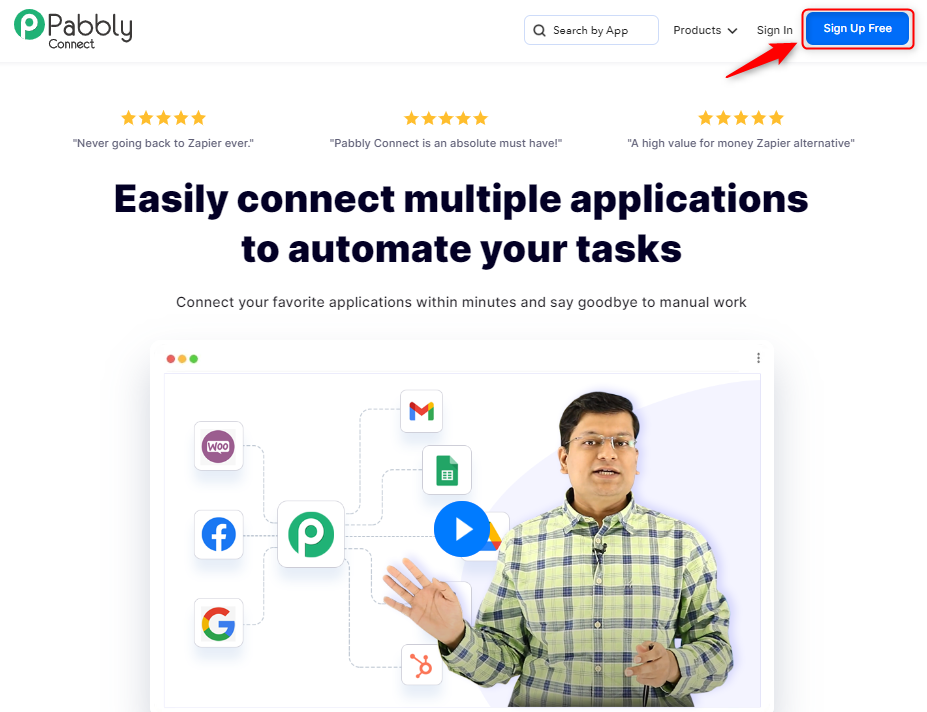
Click on the Pabbly Connect ‘Access Now’ button

B. Create Workflow
To create a new workflow, click the ‘Create Workflow’ button.

Name your workflow, and click on ‘Create’.
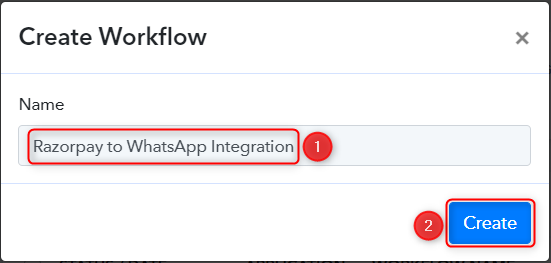
Step 2:- Establish a Connection between Razorpay and Pabbly Connect
We will look at the steps through which we can establish a link between Razorpay and Pabbly Connect. This will help us capture the data for each successful payment.
A. Trigger App
Trigger allows us to choose the application that will receive the data for Pabbly Connect. In our case, it would be Razorpay.
Expand the Trigger Step, choose ‘Razorpay’ as your Action App, and select ‘Payment Captured’ as an Action Event.

B. Webhook URL
A new Webhook URL will get generated. You will use this Webhook URL to create a connection with your Razorpay account. Copy the Webhook URL.
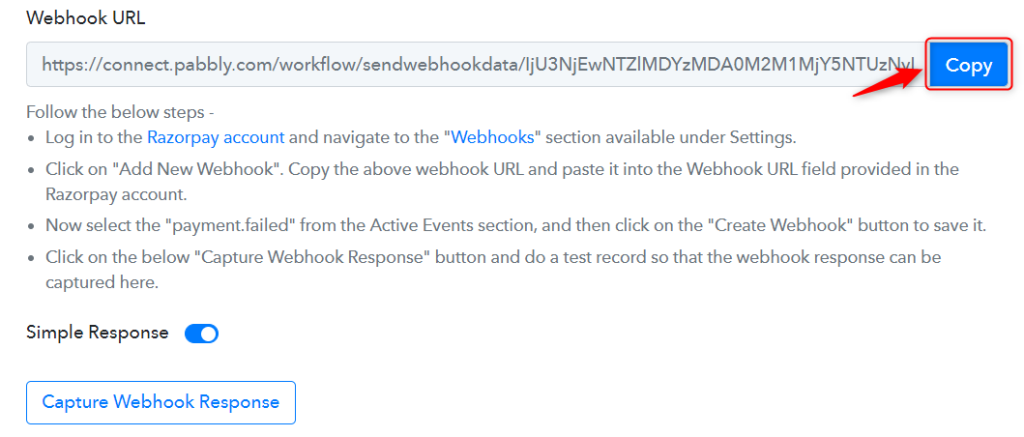
As soon as you Copy the Webhook URL, Pabbly Connect will start looking to capture data from Razorpay, as indicated by the rotating Waiting For Webhook Response button.

C. Connect Razorpay Account
To connect with your Razorpay account, go to your Razorpay dashboard and click on ‘Settings’ > ‘Webhooks’ > ‘Add New Webhook’.
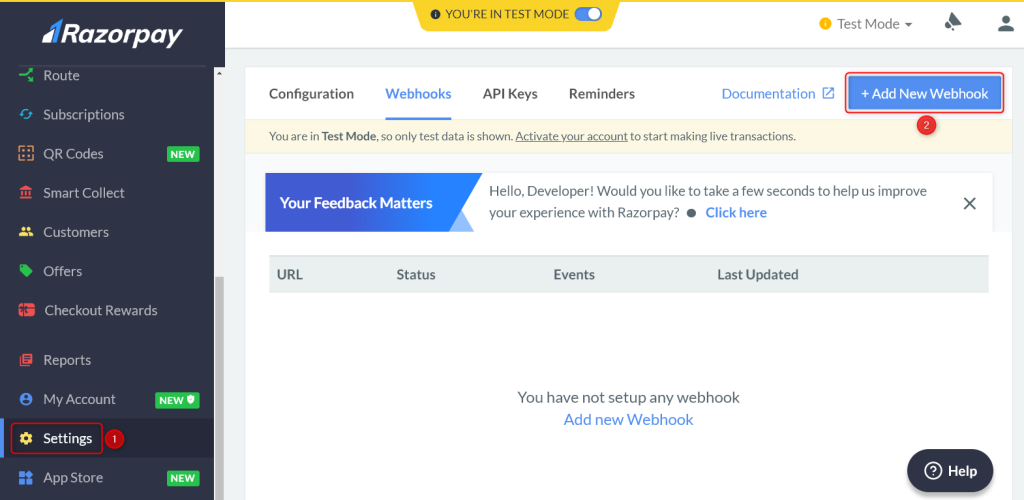
You will be prompted to create a Webhook URL. Paste the Webhook URL we copied earlier, select ‘payment.captured’ as the Active Events, and click on ‘Create Webhook’.

D. Test Connection
Let us now test the connection we just established by making a dummy payment. Open your Razorpay payment form in an incognito tab, fill in the credentials and make a payment.


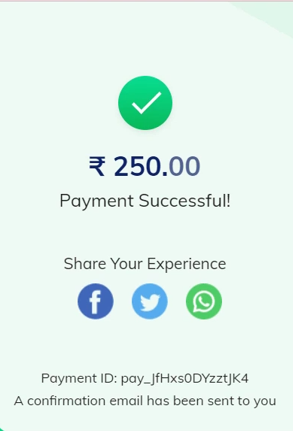
You will receive a successful payment response along with the customer details.

Step 3:- Add a Number Formatter to Correct Payment Amount
The payment amount we captured from Razorpay is incorrect as it contains two extra zeroes. We can get the correct amount by dividing the value by 100. To do so, we will add a Number Formatter to our workflow.
Choose ‘Number Formatter by Pabbly’, select ‘Perform Math Operation’ as an Action Event, and click on ‘Connect’.
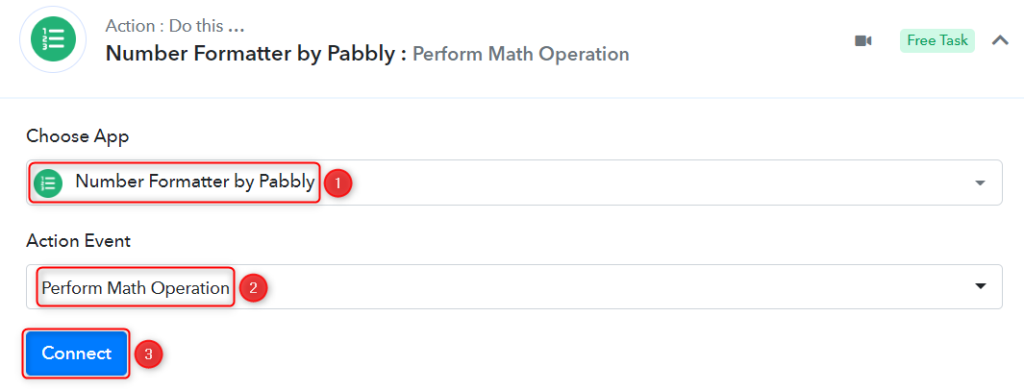
In the Numbers field, map the payment amount from the step above, put a comma, and type 100. This will let Pabbly know that the operation needs to be performed between these two numbers


Select ‘Division’ as the Operation and click on ‘Save & Send Test Request’.

Your amount is trimmed down and correct.

Step 4:- Setup WhatsApp Cloud API as the Action App
We essentially want to send template messages on WhatsApp using the details we received from Razorpay. Thus, WhatsApp Cloud API will be our Action App.
Note: Follow steps 1 to 3 of this blog to create a new Whatsapp Business Cloud API account if you don’t already have one.
Add another Action Step to your workflow by clicking the ‘+’ button.

A. Action App
Choose ‘WhatsApp Cloud API’ as your Action App, select ‘Send Template Message’ as an Action Event, and click on ‘Connect’.
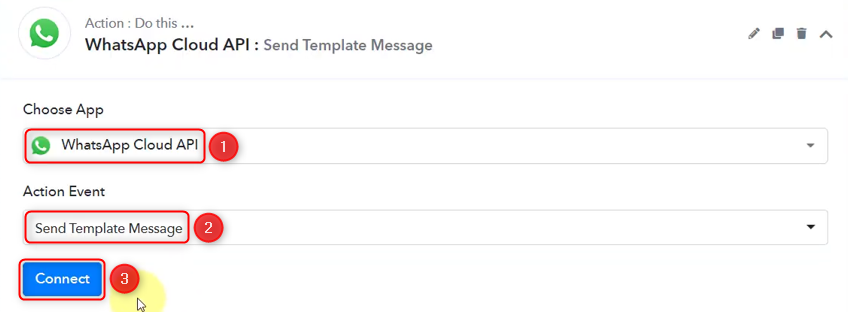
B. Connect WhatsApp Cloud API Account
To connect with your WhatsApp Cloud API account, select ‘Add New Connection’. You will be asked to enter your Permanent Token, Phone Number ID, and WhatsApp Business Account ID.
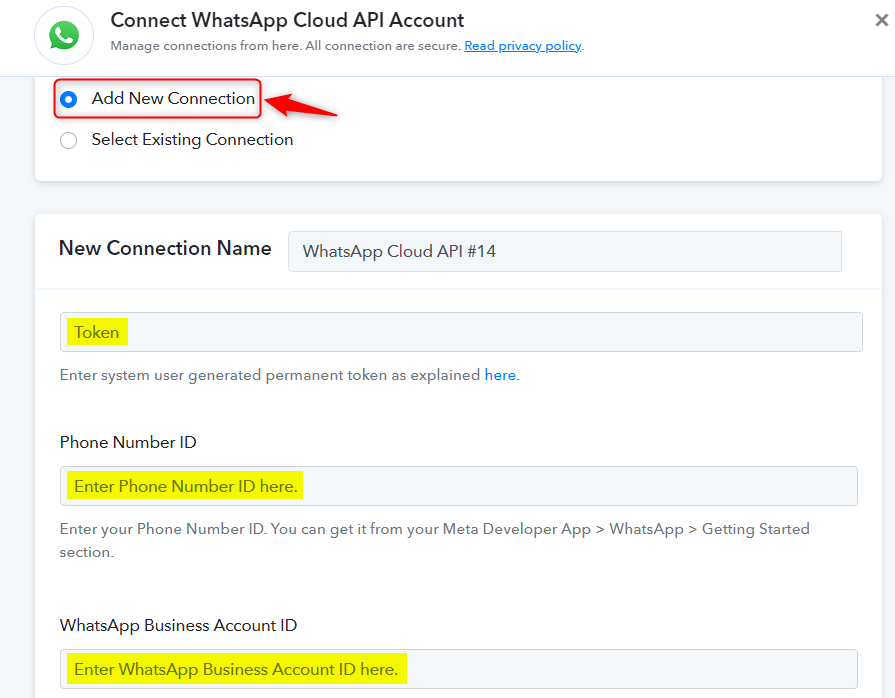
Go to your Facebook Developer dashboard, copy the Phone Number ID and WhatsApp Business Account ID

Paste both in their respective fields.
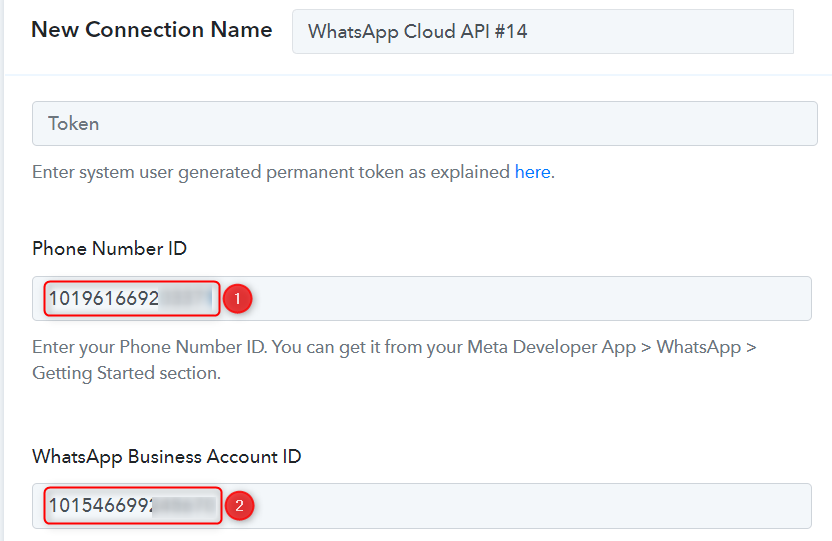
The Token visible on your dashboard is a temporary one that expires every 24 hours. For our workflow, we need a Permanent Token. You can generate a Permanent Access Token by following the steps given in this post.
Paste the Permanent Token, and click on ‘Save’
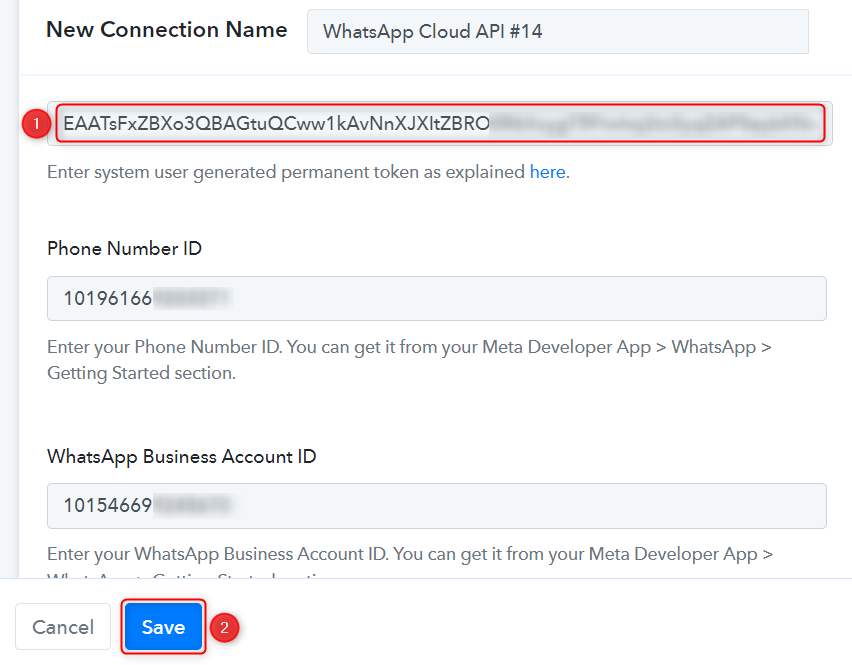
Step 5:- Compose a Message Template
You will be asked to fill up a few fields. You can either select your Template Name directly from the list if you already have one ready or create a new message template by following these steps.
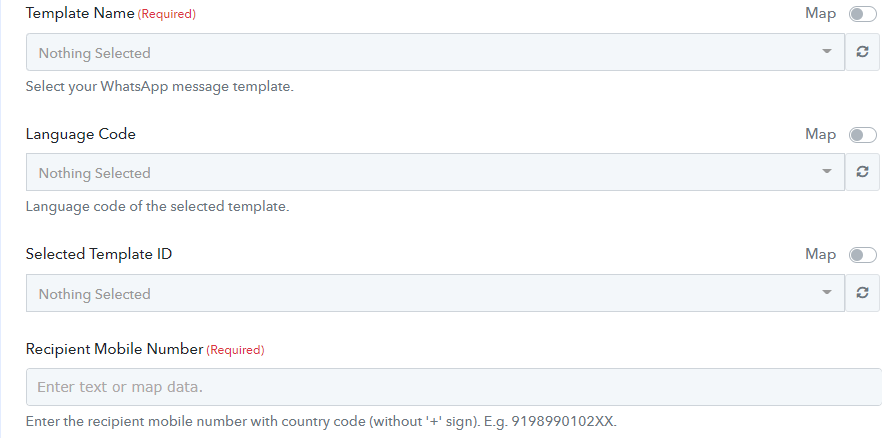
A. Create Message Template
Switch to your WhatsApp Cloud API dashboard, and click the ‘here’ hyperlink. You will be redirected to a new page.
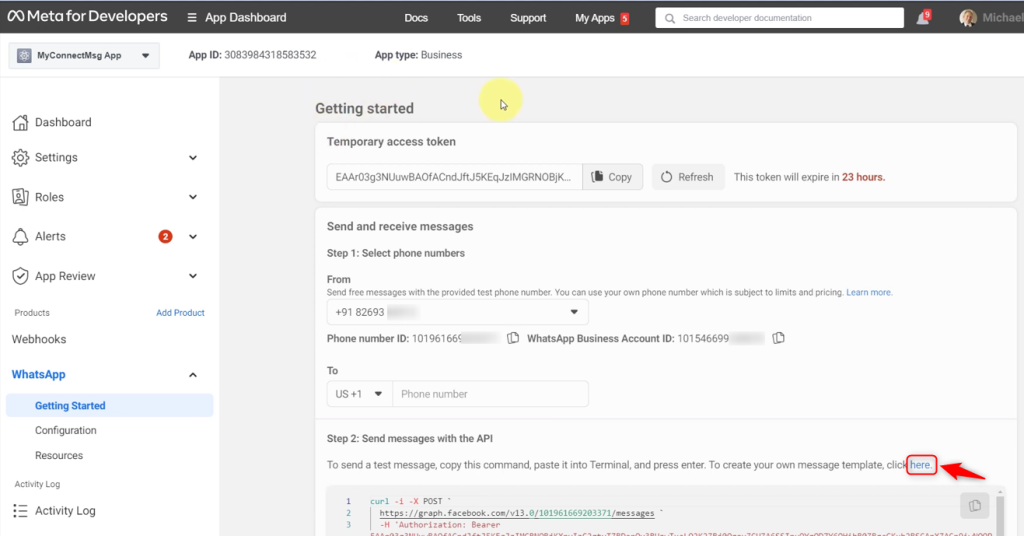
Click on ‘Create Message Template’.

Select a Category, Name the template and pick a Language. Click on ‘Continue’
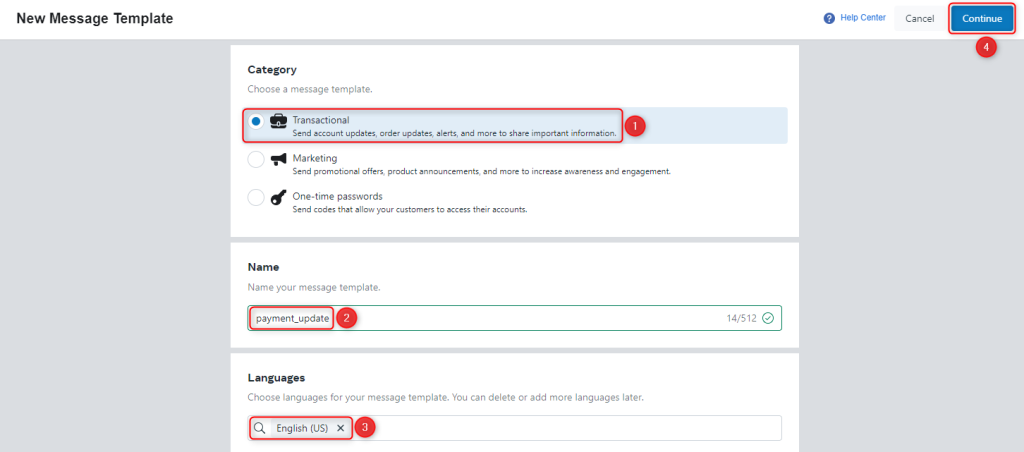
B. Body with Dynamic Data Tags
Type in your message in the Body field. To personalize your message, include Dynamic Data Tags in your template.
Dynamic Data Tags help us to include variables in our template, these variables will be replaced with actual data in your message. The actual data can be a name, an email address, date, time, ID number, etc. To add a dynamic tag to your template, write your variables between double curly braces {{variable}}.
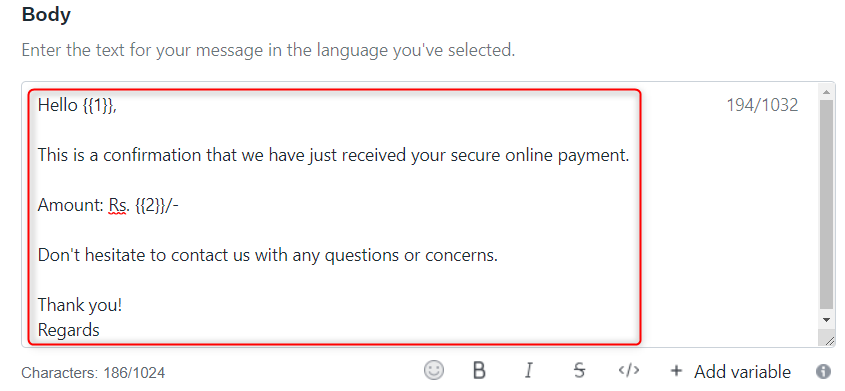
C. Add Sample Content
To create a new template message, we are required to send Facebook a sample template for verification.
To send a sample, Click on ‘Add Sample’.

Enter the data you want your tags to be replaced with, and click on ‘Done’.

‘Submit’ your message and ‘Confirm’
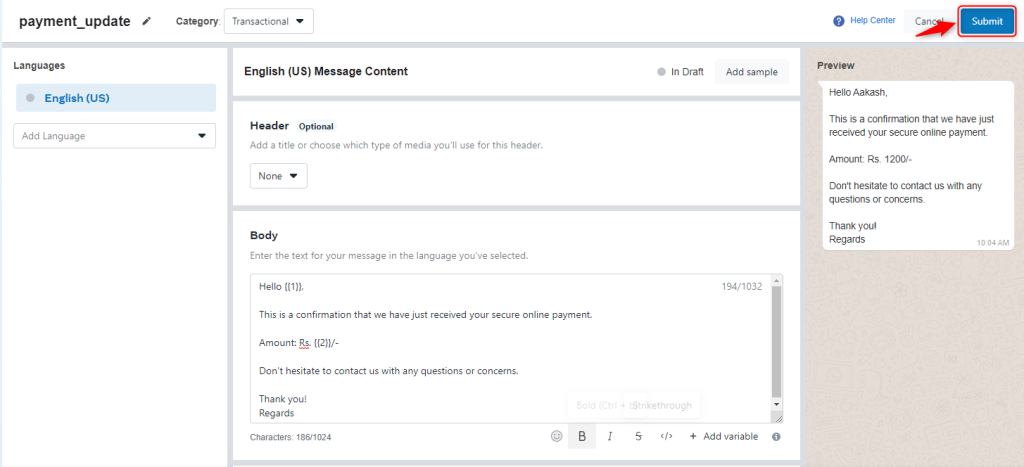
As you submit your template, it could be approved right away or go to Facebook for a manual review. This process may take anywhere from a few minutes to a few hours. Reload your page to see if your template is approved and available, as indicated by the green dot.

Step 6:- Map the Necessary Fields
Now that you have connected your WhatsApp Cloud API account, all you need is to map the necessary details from the step above. Mapping ensures our data remains dynamic and changes as per the received responses.
Select your Template Name

A. Map Recipient Mobile Number
Map the Recipient Mobile Number from the step above.

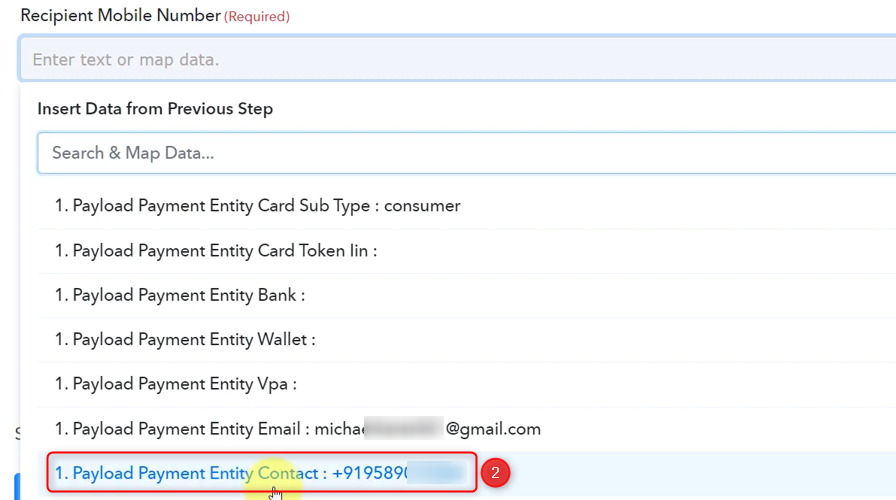

B. Map Body Fields
Remember the Dynamic Data Tags we talked about? Those tags will be replaced by the data present in Body Fields.
In Body Field, map the relevant data from above. This could vary as per your choice of variable. Click on ‘Save & Send Test Request’.


As soon as you click on Save & Send Request, a WhatsApp message will be sent to the recipient’s mobile number.
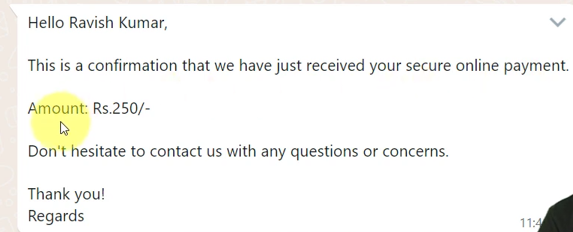
Our automation is complete. We have successfully integrated Razorpay with WhatsApp. Now each customer who makes a successful payment on Razorpay will receive a payment confirmation message automatically.
You can copy this entire workflow by clicking this link.
Sign Up for a free Pabbly Connect account, and start automating your business
Subscribe to our Youtube Channel for more such automation
For any other queries, visit our forum